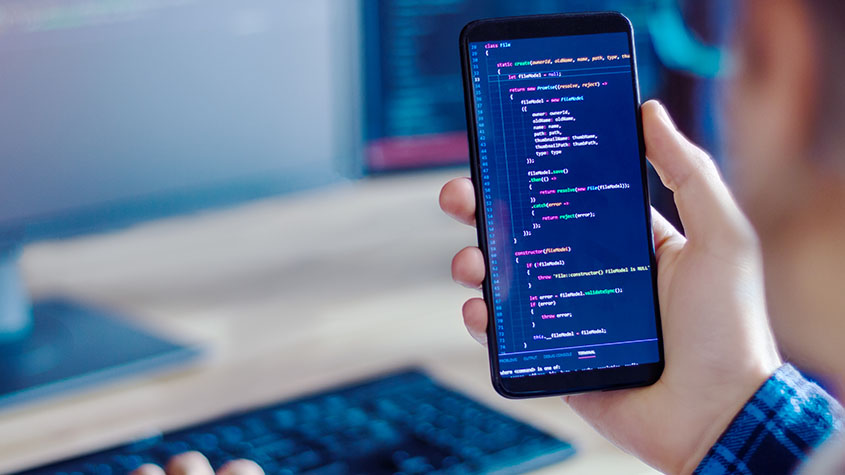Intellectual Property Rights for Mobile Applications
Intellectual property (IP) mechanisms help mobile application developers and publishers to generate more income from their creations.

Protecting Your Mobile App - Intellectual Property Solutions
Mobile apps are multilayered products with different features, protected by various intellectual property (IP) rights.
This publication serves as a guide for app developers and publishers to protect their intellectual property legally.
How to protect a mobile app's intellectual property
Mobile apps are complex products that use various types of IP.

Handbook on Intellectual Property in Mobile Applications

IP Toolbox for Mobile App Developers
IP and the mobile app lifecycle
Creation of a mobile app is a process that involves multiple steps. From the IP point of view, the three phases of a mobile app lifecycle are:
- conception (including initiation and design);
- development;
- commercialization, monitoring and enforcement.
Use this section to find answers to your IP-related questions at specific stages of mobile apps development.

IP rights for Mobile Apps Development and Commercialization
The guide explains how IP rights might be used or acquired during each of the mobile app's life-cycle phases. It follows a hypothetical free-to-play gaming app, one of the most popular categories of mobile app. [PDF]
Key Contracts for Mobile Apps
This handbook can help organizations developing mobile apps to negotiate a hassle-free path through the IP and other legal structures. It highlights aspects for consideration while creating contracts, agreements and policies throughout an app’s lifecycle. [PDF]
IP Financing for Mobile Apps
This practical tool is created to provide guidance to mobile app developers and businesses for financing a mobile application. It covers the various IP rights that can be used as a mechanism to secure funding and provides a fundraising checklist for mobile apps. [PDF]
ADR for Mobile App Disputes
This guide provides an overview of Alternative Dispute Resolution (ADR) processes for Mobile Apps disputes. It also addresses the issues relating to the enhanced use of IP in the software sector, focusing on mobile applications. [PDF]
Open Source for Mobile Apps
Data Protection in Mobile Apps
IP tools for mobile app developers

Intellectual Property Toolbox for Mobile App Developers

Tool on Mobile Apps in Digital Publishing
This tool reviews the landscape of digital publishing and the impact of new technologies on the digital book market. It discusses available solutions for distribution of digital books with the use of mobile applications.

The role of IPR in Mobile Apps’ Development and Commercialization
This module explains how intellectual property rights (IPRs) might be used or acquired during each of the life-cycle phases. It follows a hypothetical free-to-play gaming app, one of the most popular categories of mobile app.

Handbook on Key Contracts for Mobile Apps
This handbook is a practical tool for app developer organizations. It provides a thorough grounding in IP contract basics that is important to understand before consulting specialised IP professionals.

Tool on IP Financing for Mobile Apps
This tool addresses the interplay between the typology, existing business models, and IP surrounding mobile apps to guide successful financing strategies. It is targeted at app developers, app developer associations, and companies developing mobile apps.

WIPO Guide on ADR for Mobile App Disputes
This guide provides an overview of Alternative Dispute Resolution (ADR) processes for Mobile Apps disputes. It also addresses the issues relating to the enhanced use of IP in the software sector, focusing on mobile applications.

Open Source for Mobile Apps

A Guide to Data Protection in Mobile Applications
Infographics on mobile apps’ intellectual property
Learning resources: IP law for App Developers
The five modules below explain how various types of IP interface with the mobile app market and describe the most relevant IP law aspects for app developers and publishers. These modules were developed by Dr. Andres Guadamuz, Senior Lecturer in Intellectual Property Law at the University of Sussex and Editor-in-Chief of the Journal of World Intellectual Property.

Module 2: Copyright
Module 2 introduces copyright protection in detail, exploring concepts such as subject matter, originality, infringement, and defenses. (PDF)

Module 3: Data, Databases and Trade Secrets
Module 3 discusses the relative lack of protection given to data, the lack of international harmonization, and database security. (PDF)

Module 4: Trademarks and Designs
Module 4 discusses trademarks and designs, and it will also mention some relevant aspects, such as domain name registration. (PDF)

Module 5: Enforcement and licensing
The last module looks at more specific questions surrounding the mobile app market, particularly those surrounding enforcement, licensing, and rights management. (PDF)
Events
WIPO Committee on Intellectual Property and Development
The project seeks to improve the understanding of the potential of IP for income generation in mobile applications and to empower mobile application developers with tools for using IP in their work.

Scoping Study on the Availability and IP Tools for Mobile Applications
The scoping study identifies IP protection mechanisms for mobile apps in three beneficiary countries: Kenya, Trinidad and Tobago, and the Philippines.



